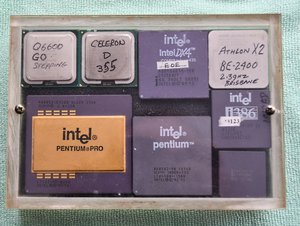Red Falcon
[H]ard DCOTM December 2023
- Joined
- May 7, 2007
- Messages
- 12,455
Ah, you are correct about that - good memory!The PIIs all had external cache which was usually 512k (if memory serves) but ran at I believe 1/2 or 2/3 speed. The first version of the Celeron had no cache at all but the second version (Celeron A)had on-die cache in the amount of 128k. However, the Celeron cache ran at full speed. In most cases a Celeron A at the same clockspeed as a PII would perform better than the PII as long as what was running was larger than the 512k cache on the PII. The higher speed and lower latency of the cache on the Celeron A was a huge boost compared to the PII.
The Celeron A design basically became defunct in the PIII era as the cache was on-die for the PIII as well as Celerons and the PIIIs had at least twice as much. At that time the Celerons still ran on a 66mhz bus while the PIIIs were 100 and 133. You could still find the occasional PIII based Celery model which was decent because you'd be able to overclock the piss out of it raising the clock speed considerably which left the only downside being the smaller cache.
![[H]ard|Forum](/styles/hardforum/xenforo/logo_dark.png)

